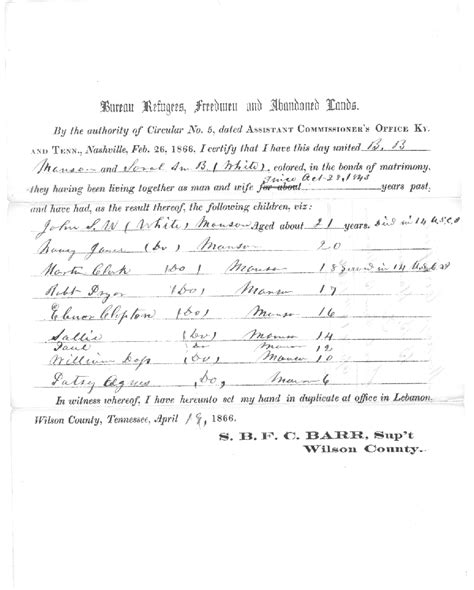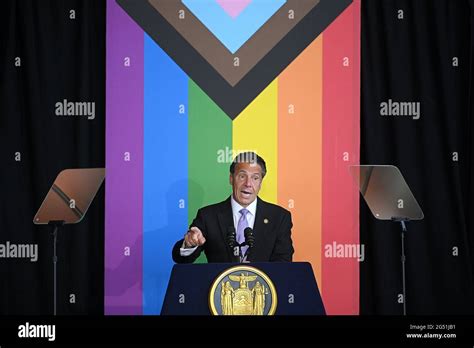Envisioning a union that weaves together two souls, transcending the realm of solitary existence, invokes a profound sense of wonder and curiosity. The desire to embark upon a journey of companionship and commitment, forever merging destinies, beckons to us with an irresistible allure. It is an innate human instinct to yearn for connection and an ardently shared life; a longing that knows no bounds and finds expression in the most vivid tapestry of our nocturnal imaginings.
As we surrender to the enchantment of reverie, our subconscious takes center stage, ingeniously manifesting scenarios that dance on the delicate line between reality and mythology. Every fiber of our being intently listens to the whispers of our dreams, eager to decipher the layers of symbolism that lie hidden in their folds. Rooted in the profundity of archetypes and collective consciousness, these nocturnal visions hold revelations of our deepest desires and fears, sealing their messages within the tender embrace of symbolism.
Within this labyrinth of reverie, an evocative symbol emerges, silently echoing the yearning for unity: the envisioning of a symbolic contract, an ethereal tethering of souls through a sacred bond that transcends earthly boundaries. These ephemeral visions, in the form of a unseen parchment, delicately underscore our intrinsic desire to forge a connection so profound that it can withstand the trials of time, guiding two individuals through the ebbs and flows of existence.
Embracing the intricate threads of symbolism within our dreams, we embark upon a journey of exploration, seeking to unlock the profound meanings carved into the fabric of our subconscious. Illuminating the path towards understanding, we strive to decipher the enigma of union and commitment that permeates the ethereal realm of nocturnal visions.
Romanticizing the Act of Sealing Forever

When two souls pledge their eternal love and commitment, it is the moments shared in intimacy that often prove to be the most profound. While the act of signing official documents may seem mundane, it holds a deeper significance for couples dreaming of a lifetime together. The act of signing becomes a romantic gesture, a symbolic representation of two hearts intertwining, as they seal their love for each other in ink.
As the pen touches the paper, it etches a tangible symbol of the couple's shared journey. The act of inscription becomes an embodiment of their promises, capturing the essence of their love story in a single stroke. It takes them beyond the realm of dreams and aspirations, and anchors their commitment in a tangible reality.
With each letter formed, the couple's individual paths merge into a unified existence. The strokes of the pen represent the intertwining of their lives, forming a bond that will withstand the tests of time. This moment holds the power to transform their dreams into a shared reality, as they embark on a journey as partners, companions, and co-creators of a life filled with love and joy.
- The act of signing carries an air of ceremonial significance, as the couple steps into the realm of matrimony. It marks the beginning of their lifelong adventure, building a foundation based on trust, respect, and unwavering support.
- With every pen stroke, the couple embraces the responsibility that comes with their union. They promise to navigate the ups and downs of life together, facing challenges with courage, and celebrating triumphs with shared delight.
- The act of inscription not only signifies the merging of two souls but also serves as a reminder of the promises made. It is a tangible representation of their commitment, offering reassurance during moments of doubt and serving as a beacon of hope during times of uncertainty.
- In an era where digital signatures prevail, the act of physically signing a marriage certificate brings a sense of authenticity and legacy. It leaves an indelible mark, a testament to their love, which can be cherished and passed down through generations.
So, as couples dream of signing a marriage certificate, they also dream of romanticizing the act itself. It becomes a moment of unity, devotion, and unwavering love. The strokes of the pen may seem simple, but they hold the power to transcend the mundane and transform into a profound manifestation of love's enduring strength.
Unraveling the Symbolic Importance
In this section, we delve into the intricate layers of symbolism embedded in the profound act of dreaming about the formalization of a lifelong commitment. Exploring the profound meanings encapsulated in this vision, we aim to uncover the hidden messages and interpretations that lie beneath the surface.
Through the examination of various symbolic elements and motifs present in these dreams, we seek to unravel the significance behind the subconscious desire for union and connection. By dissecting the subtle nuances and expressions, we will decipher the underlying emotions and aspirations that drive these dreams and reflect upon their implications in our waking lives.
Within the realm of symbolism, our exploration unveils the presence of powerful archetypal figures and motifs that resonate across cultures and time periods. We will examine the figurative representations of unity, commitment, and ceremonial rites, highlighting their significance in shaping our collective consciousness and understanding of relationships.
Furthermore, by delving into the interpretations of dreaming about the formal documentation of a union, we aim to gain insights into the longing for stability, security, and a sense of belonging that lies within us. These dreams often hold a mirror to our subconscious desires and fears surrounding commitment, societal expectations, and personal fulfillment.
Through the lens of psychology, we will also delve into the powerful role that dreams play in unlocking our subconscious desires, fears, and unresolved emotions. Exploring the psychological significance of dreaming about signing a marriage certificate, we will analyze the underlying motivations and conflicts that shape these visions, providing a deeper understanding of our own psyche.
In conclusion, this section aims to unravel the intricate layers of symbolic importance hidden within the act of dreaming about signing a marriage certificate. By exploring the archetypal motifs and psychological insights associated with these dreams, we gain a deeper understanding of the subconscious desires, fears, and aspirations that drive our longing for connection, commitment, and fulfillment in our waking lives.
Marriage Certificate: A Sacred Bond Document

When two souls unite in a heartfelt commitment, they embark on a journey of love, trust, and devotion. At the core of this profound connection lies the marriage certificate, a document that symbolizes the solemnity and permanence of their union. This certificate serves as a tangible representation of the promises made and the covenant entered into by the couple.
The marriage certificate acts as a sacred contract, bearing witness to the couple's unyielding dedication and loyalty to one another. It solidifies the bond between them, validating their union in the eyes of society, their families, and themselves. With its signature lines and formalities, the certificate holds the power to bring immense joy and a sense of security. It represents an emotional and legal commitment, a promise to cherish and support one another through all of life's ups and downs.
| Power of Commitment | Symbol of Unity | Legal Protection |
| The marriage certificate is a testament to the power of commitment, demonstrating the couple's unwavering devotion to their partnership. It signifies their willingness to weather the storms of life together, to grow and evolve as individuals, and to build a shared future filled with love and understanding. | Symbolizing unity, the marriage certificate celebrates the merging of two lives, two families, and two destinies. It is a tangible representation of the bond formed in marriage, reminding the couple of their connectedness and the support system they have built around themselves. | While the marriage certificate holds sentimental value, it also carries legal significance. The document safeguards the rights and responsibilities of each partner, providing legal protection to both during the course of their marriage. It ensures property rights, inheritance, and access to essential benefits such as healthcare, social security, and taxation advantages. |
In conclusion, the marriage certificate is far more than just a piece of paper. It encapsulates the deep commitment, love, and trust shared between two individuals embarking on a lifelong journey together. It symbolizes unity, grants legal protection, and stands as a constant reminder of the promises made and the sacred bond that exists between husband and wife.
Unveiling the Historical Importance
Delving into the historical context surrounding the act of solemnizing a marital union unveils a tapestry of significance that spans across cultures and time periods. Exploring the historical significance provides insights into the evolution of marriage rituals and the symbolism attached to them.
Examining the historical roots of matrimonial customs allows us to comprehend the complex web of traditions, beliefs, and social norms that influenced the solemnization of marriages. By unraveling the historical threads, we gain a deeper understanding of how the societal constructs surrounding marriage have molded over centuries.
Weaving through different civilizations and epochs, we discover that the historical significance of marriage extends beyond individual unions. Marriage rituals have served as a reflection of cultural values, religious beliefs, and societal expectations, thereby reinforcing collective identity and cohesion within communities.
Throughout history, the act of formalizing a marital commitment has been imbued with various symbolic meanings. These symbols may vary across cultures and eras but often encompass themes such as unity, faithfulness, fertility, and the joining of families. Understanding these symbols allows us to appreciate the layers of meaning embedded in the signing of a marriage certificate.
By comprehending the historical significance of marriage customs and the symbolism attached to them, we can grasp the enduring resonance of solemnizing a marital union. The continuance of these traditions and their symbolic gestures carries forward the collective memory of human connection, epitomizing the universal desire for love, companionship, and a shared journey through life.
Cultural Variations in Rituals Surrounding Matrimonial Documentation

In the realm of matrimonial customs and traditions, careful examination of cultural practices reveals distinct variations in the rituals associated with the documentation of marriage. These customs, deeply rooted in cultural beliefs and traditions, highlight the diverse ways in which different societies express the significance and symbolism of union between individuals. The following analysis delves into the diverse cultural variations in marriage certificate rituals, shedding light on the extensive range of practices that encapsulate the essence of matrimonial commitment.
1. Rituals surrounding the exchange of rings:
- Connotation and symbolism of wedding bands
- Historical origins and cultural significance of ring exchange
- Customs and practices related to ring placement and adornment
2. Rituals involving communal blessings:
- Richness of cultural practices in seeking blessings from elders
- Religious and spiritual connotations tied to the concept of communal blessings
- Variations in the format and execution of communal blessing rituals
3. Rituals centering around public declarations:
- The importance of public declarations as a cultural expression of commitment
- Distinct ways in which societies conduct public declaration ceremonies
- Symbolism behind public declaration rituals and their impact on societal perception
4. Rituals emphasizing the role of witnesses:
- The significance of witnesses in validating matrimonial contracts
- Varied traditions surrounding the selection and involvement of witnesses
- Social and cultural implications of witness participation in marriage certificate rituals
5. Rituals signifying the union through formal documentation:
- Diverse ways in which different cultures approach the act of formalizing a marriage
- Legal and cultural aspects of marriage documentation processes and requirements
- The symbolism and importance attributed to the physical marriage certificate
By exploring the vast array of cultural variations in marriage certificate rituals, we gain insight into the profound ways in which different societies express their beliefs, values, and commitments surrounding the union of individuals. Each ritual carries its own symbolism and meaning, providing a glimpse into the diverse tapestry of human traditions and customs.
Seeking Validation: The Emotional Impact
When our hopes and desires intertwine with the yearning for recognition, the emotional impact can be profound and transformative. The quest for validation is an innate human need, guiding our actions and shaping our self-perception. In the context of dreaming about the symbolic act of signing a marriage certificate, this desire for validation takes on a unique significance, representing the deep longing for acceptance and acknowledgment in our romantic relationships.
Validation - the affirmation that our emotions, thoughts, and experiences are valid and deserving of recognition - holds a prominent place in our lives. It serves as a fundamental pillar of self-worth, influencing our sense of identity and providing reassurance in our connections with others. When this longing for validation manifests in dreams, it becomes a reflection of our subconscious yearnings and a mirror to our deepest emotional needs.
Just as signing a marriage certificate symbolizes the commitment and validation of a romantic union, the dream of this act holds a symbolic weight that extends beyond the realm of marriage itself. It signifies the inherent desire to be seen and acknowledged in our most intimate relationships, longing for our love and dedication to be affirmed and celebrated.
Validation resonates deeply within us, as we seek emotional support and understanding from our partners. It cultivates a sense of security and confidence, nurturing our ability to express vulnerability and form deep emotional connections. The dream of signing a marriage certificate taps into this fundamental need, reminding us of the significance of validation in our pursuit of loving and fulfilling partnerships.
Ultimately, the emotional impact of seeking validation in our dreams of signing a marriage certificate emphasizes the powerful influence of recognition and acceptance in our lives. It highlights the importance of acknowledging our own worth and finding partners who honor and validate us, granting us the emotional security and fulfillment we desire.
The Significance of Marriage Certificates in Legal Systems

Marriage certificates play a fundamental role in legal systems around the world, serving as a legally recognized document that formally records the union between two individuals. This important piece of paperwork symbolizes the legal rights and responsibilities that come with marriage, making it an essential aspect of the legal framework governing matrimonial relationships.
The Legally Binding Nature:
Marriage certificates serve as tangible evidence of a legally recognized union between spouses. These documents not only signify the commitment made by both parties but also create a binding relationship that is recognized and respected by the legal system. By obtaining a marriage certificate, couples are granted a legal status that bestows various rights, privileges, and obligations.
Protecting Rights and Responsibilities:
A marriage certificate serves as a legal safeguard, ensuring that both individuals involved in the union are entitled to inherent rights and benefits. It establishes essential aspects of marital life, including property rights, inheritance, and financial protections, ensuring that both spouses are granted legal recognition and security within the legal system.
Proof of Marriage:
In addition to its legal implications, a marriage certificate serves as irrefutable evidence of a valid marriage. It holds significant value in legal proceedings, such as divorce or property disputes, where the existence and legitimacy of the marital relationship may be questioned. By presenting a marriage certificate, individuals can substantiate their claim and establish the legal foundation of their marital union.
International Recognition:
Marriage certificates also play a crucial role in facilitating international recognition of marriages. In many cases, when spouses need to prove their marital status for immigration or residency purposes in another country, presenting a marriage certificate is often a requirement. This document acts as proof of a valid and recognized marriage, ensuring the couple's legal rights and benefits are upheld in foreign jurisdictions.
To conclude, marriage certificates hold immense significance in legal systems worldwide. These documents provide legal recognition, protect individual rights and responsibilities, offer proof of a valid marriage, and aid international recognition. Through their legally binding nature, marriage certificates serve as a cornerstone of matrimonial relationships within the legal framework.
The Significance of Ceremonies and Personal Convictions
Within the realm of celebrating important milestones and events, rituals serve as powerful tools that hold deep personal meaning and significance. These ceremonial acts provide individuals with a sense of connection to their beliefs, values, and traditions, often granting solace and clarity in times of uncertainty.
By engaging in rituals, individuals infuse their actions with intention and purpose, creating an environment conducive to reflection and personal growth. Whether it be through prayer, meditation, or symbolic gestures, these practices allow us to tap into the essence of our being, aligning our thoughts and emotions with our innermost desires.
Symbolism plays a crucial role in making rituals a transformative experience. Be it the lighting of a candle to represent hope and illumination, exchanging rings to symbolize unity and commitment, or the partaking of a shared meal to signify togetherness and nourishment, these symbolic acts resonate deeply within the human psyche, stimulating profound emotions and triggering moments of profound introspection.
While rituals often carry embedded cultural and societal meanings, they also provide space for individual interpretation and personalization. Each person's unique background, experiences, and convictions shape the way they perceive and engage in ritualistic practices, allowing for a diversity of beliefs and understandings to exist harmoniously.
Furthermore, rituals have the power to connect the present moment with a larger context, bridging the gap between the tangible and the spiritual. Whether it be through the recitation of sacred texts, the performance of traditional dances, or the donning of ceremonial attire, individuals are transported beyond the constraints of time and space, immersing themselves in the richness of tradition and the wisdom of their ancestors.
In conclusion, the power of rituals lies in their ability to encapsulate profound meaning, evoke intense emotions, and foster a sense of belonging. As individuals engage in these ceremonial acts, their personal beliefs and convictions are brought to the forefront, reinforcing their connection to their values and granting them a deeper understanding of themselves and their place in the world.
Marriage Certificates: A Perspective on Gender Equality

In this section, we will delve into an analysis of the correlation between marriage certificates and gender equality. Through a critical exploration of societal norms and expectations, we aim to shed light on the significance of marriage certificates in relation to gender roles and perceptions.
Examining the Historical Context
Throughout history, marriage certificates have often been viewed as a symbol of societal and legal recognition of a union between two individuals. Historically, these certificates have played a crucial role in consolidating the rights and responsibilities of those entering into marriage. However, it is essential to acknowledge that the interpretation and application of these certificates have been influenced by prevailing notions of gender roles and power dynamics.
Challenging Gender Stereotypes
Within the context of marriage certificates, traditional gender roles have perpetuated unequal power dynamics and restricted opportunities for individuals to fully express themselves and their identity within the institution of marriage. However, with increasing societal awareness and advocacy for gender equality, there has been a growing call for reevaluating and reshaping the interpretation of marriage certificates.
Promoting Equal Partnership
Marriage certificates should be seen as an opportunity to redefine and reimagine the concept of partnership, free from the constraints of traditional gender expectations. Embracing the principles of gender equality within marriage certificates allows for a shared commitment to mutual respect, support, and fair division of responsibilities between partners.
The Role of Marriage Certificates in Legal Protections
Marriage certificates provide legal protections and entitlements to individuals within a marriage, regardless of their gender. These legal rights contribute to fostering equality within the institution of marriage, enabling individuals of all genders to access rights such as healthcare benefits, property ownership, and decision-making authority.
Advancing towards Gender-Inclusive Marriage Certificates
Efforts are being made to create more inclusive marriage certificates that recognize same-sex marriages and non-binary individuals' identities. By acknowledging diverse gender identities and expressions, these inclusive marriage certificates promote equality and support individuals in celebrating their love and commitment, irrespective of societal norms and expectations.
Conclusion
By critically examining marriage certificates through the lens of gender equality, we can challenge traditional norms, redefine partnership, and advocate for inclusive recognition of diverse gender identities. Embracing gender equality within marriage certificates extends beyond symbolic representation, paving the way for equal rights and opportunities for all individuals within the realm of marriage.
Exploring Alternative Perspectives on the Institution of Matrimony
This section delves into unconventional viewpoints and diverse interpretations surrounding the institution of marriage. By examining various alternative perspectives, we can gain a deeper understanding of the complexities and nuances associated with this age-old custom.
1. Marriage as a Social Contract: Some argue that marriage is an arrangement primarily driven by social, economic, or political considerations. They maintain that it is a contract between two individuals, motivated by shared interests rather than solely romantic love.
2. Marriage as a Symbol of Partnership: Another viewpoint suggests that marriage represents a union between two individuals who come together as equal partners to support each other emotionally, intellectually, and spiritually. It is seen as a symbol of companionship and a commitment to personal growth and fulfillment.
3. Marriage as a Cultural Tradition: Many cultures have unique customs and rituals associated with marriage, highlighting its importance as a cultural institution. This perspective emphasizes the significance of marriage in preserving and promoting cultural heritage.
4. Marriage as an Expression of Love: For some, marriage is an expression of deep love and connection between two individuals. It is seen as a way to publicly celebrate and solidify a romantic bond, acknowledging the emotional and physical commitment between partners.
5. Marriage as a Personal Choice: This viewpoint emphasizes the individual's right to choose whether or not to participate in the institution of marriage. It recognizes that not everyone may desire or benefit from traditional marriage and highlights the importance of personal autonomy in making such decisions.
While these perspectives offer a glimpse into the multifaceted nature of marriage, it is important to acknowledge that individuals may hold unique and personal beliefs on the subject. Understanding diverse viewpoints allows us to foster greater empathy and respect for different approaches to the institution of matrimony.
FAQ
What is the symbolism behind signing a marriage certificate?
Signing a marriage certificate symbolizes the legal and official commitment between two individuals to spend their lives together as a married couple. It signifies the start of a lifelong partnership and represents the legal recognition of their union.
Does signing a marriage certificate hold any cultural or religious significance?
Yes, signing a marriage certificate holds cultural and religious significance in many societies. The specific customs and rituals may vary across different cultures and religions, but the act of signing the certificate often represents the couple's commitment, as well as the blessings and approval of their families and communities.
What is the meaning of dreaming about signing a marriage certificate?
Dreaming about signing a marriage certificate can have various interpretations. It may symbolize a desire for commitment and stability in a romantic relationship, or it could represent the dreamer's wish to make their partnership more official and recognized. Additionally, it could signify a readiness for a lifelong commitment or a need for legal security within a relationship.



